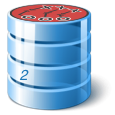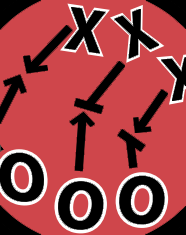 Use Tools to integrate research-based, best practices associated with Text Complexity Strategies.
Use Tools to integrate research-based, best practices associated with Text Complexity Strategies.Layer 2 — DISCOVER the value of the components in research-based, best practices associated with Text Complexity Strategies
- IDENTIFY specific vocabulary and components within text complexity strategies addressing in-depth workflows.
- CONDUCT specific workflows within text complexity strategies that COLLECT information to be analyzed.
- INVESTIGATE and ANALYZE information to ensure its value for making informed decisions on text complexity strategies.
- Example: APPLY a specific workflow to INVESTIGATE and ANALYZE the components of a text complexity strategy.
Text Complexity Strategy Tools
- Resource
Readability Formulas
Welcome to ReadabilityFormulas.com, a free website to help you: 1) score your texts (documents, books, policies, technical materials, etc.) and 2) find the reading level and grade level that readers need to read and comprehend your text.
- Resource
Directions to Enable Reability Check in Word.docx
When Microsoft Office Outlook and Microsoft Office Word finish checking the spelling and grammar, you can choose to display information about the reading level of the document, including readability scores according to the following tests:
• Flesch Reading Ease
• Flesch-Kincaid Grade Level - Resource
Lexile Framework for Reading
The Common Core State Standards Initiative places a strong emphasis on the role of text complexity in evaluating student readiness for college and careers. To follow are the Common Core Standards' three equally important components of text complexity, along with how Lexile® measures can support them. - Resource
Lexile Codes
Sometimes a Lexile measure by itself is not enough information to choose a particular book for a particular reader. This is why some books get Lexile codes—two-letter designations that appear before the Lexile measure (for example, AD580L).
The Lexile code gives you more information about a book that relates to its developmental appropriateness, reading difficulty, and common or intended usage. Word frequency and sentence length—the two text characteristics that determine a Lexile measure—do not describe all of the content of a book. Lexile codes provide some context to the numerical measure to further help you guide readers toward fruitful reading experiences. - Resource
Lexile Analyzer ®
The Lexile ® measure of text is determined using the Lexile Analyzer ®, a software program that evaluates the reading demand—or readability—of books, articles and other materials.
The Lexile Analyzer ® measures the complexity of the text by breaking down the entire piece and studying its characteristics, such as sentence length and word frequency, which represent the syntactic and semantic challenges that the text presents to a reader.
The outcome is the text complexity, expressed as a Lexile ® measure, along with information on the word count, mean sentence length and mean log frequency - Resource
Lexile "Find a Book"
The free "Find a Book" search helps readers build custom book lists based on their ability (Lexile measure) and personal interests or school assignments. - Resource
Lexile-to-Grade Correspondence Charts
There is no direct correspondence between a specific Lexile measure and a specific grade level. Within any classroom or grade, there will be a range of readers and a range of reading materials. For example, in a fifth-grade classroom there will be some readers who are ahead of the typical reader (about 250L above) and some readers who are behind the typical reader (about 250L below). To say that some books are "just right" for fifth graders assumes that all fifth graders are reading at the same level.
The Lexile® Framework for Reading is intended to match readers with texts at whatever level the reader is reading. - Resource
Comparison Chart for Readability Levels and Grade Levels
Use this simple chart to see approximate equivalents to other ready program readability measures.
- ATOS Book Levels
- Lexile Text Measures
- Guided Reading Levels
- Reading Recovery Levels
- Resource
Lexile Reading Framework: Video
Recognized as the most widely adopted reading measure, Lexile measures are used at the school level in various capacities in all 50 states. Each year, more than 28 million Lexile measures are reported from state and national assessments, classroom assessments and reading programs, representing about half of U.S. students.
The Lexile Framework is an educational tool that connects readers with reading materials using a common measure called a Lexile. What makes the Lexile Framework unique, and what has led to its widespread adoption, is that it measures both reading ability and text difficulty on the same developmental scale.
When used together, Lexile reader measures and Lexile text measures enable educators, parents and students to find books and other materials that will provide an appropriate level of challenge, while still maintaining interest and learning. For more information on the Lexile Framework, visit www.Lexile.com.
- Resource
Common Core State Standards (ELA) Appendix A: Supplemental Information
New Research on Text Complexity - Supplemental Information for Appendix A of the Common Core State Standards for English Language Arts and Literacy - Resource
Common Core State Standards (ELA) Appendix B
Common Core State Standards for English Language Arts and Literacy in History/Social Studies, Science, and Technical Subjects
Appendix B: Text Exemplars and Sample Performance Tasks - Resource
Increasing Text Complexity
Article: A Discussion of "Increasing Text Complexity" by Karin Hess and Sue Biggam, 2004
This article includes a summary of the research surrounding quantitative and qualitative measures of text complexity. It offers grade span tables to describe specific ways in which text material generally increase in difficulty over the grade span of grades 1 through high school. The tables include sample texts to benchmark progress at the end of each grade. - Resource
ELA Text Complexity Rubric Guide
The text complexity rubric is intended to assist educators in evaluating multiple dimensions of a text in order to determine the proper placement of that text within the curriculum.
The rubric addressees the three aspects of text complexity required for consideration in Common Core Appendix B: qualitative, quantitative, and reader/task match. Each of these three dimensions includes specific relevant categories, each of which is listed with a short explanation to assist users in making the best possible determination. - Resource
Text Complexity: Qualitative Measures Rubric and Planning Questions
Developed by Kansas Department of Education: Qualitative Measures Rubric
- Meaning
- Text Structure
- Language Features
- Knowledge Demands
- General
Strategies: Text Complexity
Text Complexity Training
Text Complexity Topics
Text Complexity Resources
Text Complexity Feedback
Text Complexity QuickStarts
The Seven Steps

Arch Platform is Copyright © 1997-2013
GammaStream Technologies, Inc. & Aurora Learning Community Association
0.3444 and 9.83MB | v2014.03.15
GammaStream Technologies, Inc. & Aurora Learning Community Association
0.3444 and 9.83MB | v2014.03.15